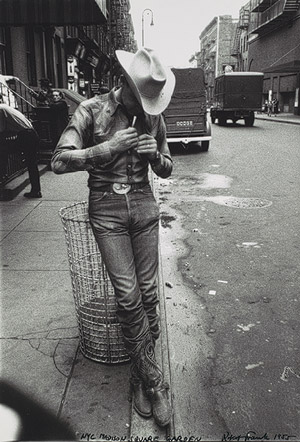


they're kind of rough sketches right now, but it was extremely helpful to start building the boxes.
The labels weren’t up yet for many of the pieces, but I’ll just describe them. The photographs to the left of the entrance were interesting. They are stimulating images that seem to have an elaborate conceptual meaning, although the point wasn’t quite made clear to me. Maybe the title would give some clues, although I don’t think its necessary to know the meaning to enjoy the visual elements of the photographs. I also enjoyed the large abstract landscape paintings in the room on the far left. The bright, almost neon pigments seem to come straight from the tube. The violent brushstrokes blend to create softer imagery and it seems to speak about painting itself. It reminds me of Paper Rad, being almost a visual attack on the viewer, with the vibrancy of the colors and the animated brushstrokes.
I also enjoyed the pieces entitled Barn Wood and Bottles and Bones. The installation comprised of seemingly useless objects created beautiful negative spaces. It’s simple and pleasant to look at. I like the intimacy of smaller objects and I don’t know if this would be completely against the artist’s objective, because I’m not very good at reading into meanings, but I think it would be effective if the pieces were shown in greater quantity. Lastly I enjoyed Erin Dunn’s installation in the room to the far right. What I liked most were the small topiary models and landscapes inside the bell jars. I thought they were beautiful and had a nostalgic feel, which was enhance by the old boxes and spools of string. They created a space that you longed to be in while still withholding that from the viewers creating a tension. The other works in the room kind of get lost because that installation had so much going on. It makes me think that the piece probably should’ve had its own room.
| 1 | Rhode Island School of Design Providence, RI | Enter your zip | 4.6 | ||
| 2 | Yale University New Haven, CT | Enter your zip | 4.5 | ||
| 3 | School of the Art Institute of Chicago Chicago, IL | Enter your zip | 4.4 | ||
| 4 | Cranbrook Academy of ArtBloomfield Hills, MI | Enter your zip | 4.2 | ||
| 4 | Maryland Institute College of Art Baltimore, MD | Enter your zip | 4.2 | ||
